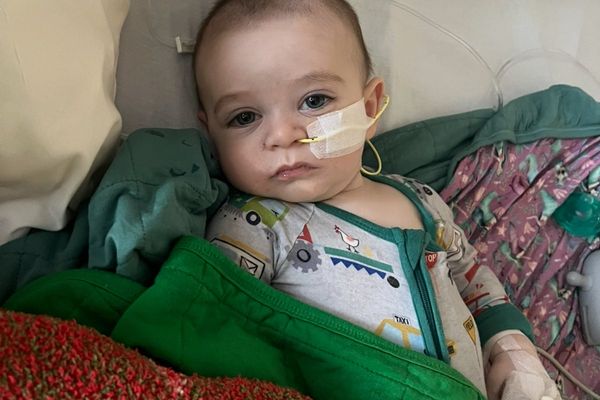
The measles outbreak in Texas has officially ended, but as cases continue to be detected in other parts of the US state health experts are warning of the need to prepare for outbreaks in undervaccinated communities, especially as anti-vaccine beliefs are becoming more prominent during the Trump administration.
So far this year, 1,356 confirmed measles cases, largely from 32 outbreaks, have been reported across the US – compared with last year’s entire total of 285 cases and 16 outbreaks. While the Texas outbreak initially drove the case counts, other US outbreaks are now contributing in increasing numbers.
To prepare for new and expanding outbreaks, health officials will need more detailed breakdowns of which counties and communities have low vaccination rates and prepare for discreet but accessible vaccination campaigns and community-led education efforts. And when outbreaks hit, public health officials need the resources to mount effective responses quickly.
“You need to launch a catch-up vaccination campaign and explain why measles is a serious illness,” said Peter Hotez, dean of the National School of Tropical Medicine at Baylor College of Medicine. “And then provide vaccine access by creating catch-up vaccination clinics.”
Going door to door or running smaller clinics might be more effective to vaccinate some hesitant communities, said Katherine Wells, Lubbock’s director of public health.
“I think people would have been more likely to go into smaller or more neighborhood-level places,” she said of the Texas outbreak.
When children first appeared at the hospital in Lubbock with telltale rashes and respiratory symptoms, doctors moved quickly to run tests and notify Wells of potential measles cases. Wells wanted to understand exactly how public health officials had contained measles outbreaks in the past, especially among communities similar to those of the Mennonite patients they were seeing initially in the outbreak.
Immediately, she hit a snag: the US Centers for Disease Control and Prevention (CDC), normally a central resource for officials battling outbreaks like these, had been placed under a gag order by new Trump administration officials.
Instead, Wells turned to the literature, reading everything she could find.
She was familiar with the 2018-19 outbreak in New York City’s Orthodox Jewish communities, but it was an earlier episode that really caught her eye: a 2014 outbreak among Mennonites in Ohio.
She sent an article about the Ohio outbreak to Zach Holbrooks, head of the public health department covering Gaines county, where the outbreak was centered.
“It seemed very similar to the culture of who we were working with in Gaines county,” Wells said. They spent the weekend “trying to figure out what we needed to do” before the cases were confirmed and announced to the public.
It took four months to quell the 2014 Ohio outbreak. The handful of cases pointing to a growing outbreak in Texas were unlikely to be resolved in a week or two, Wells said. “So we needed to make sure we were planning for the long term.”
They set up mass vaccination clinics, which were frequented more in Lubbock than in Gaines county. “I think there’s some stigma about getting vaccines,” Wells said – especially in highly visible places where news media tended to camp out.
Yet vaccinations had worked well in Ohio to stop the outbreak.
“I think they were able to do more going door to door and setting up smaller vaccination clinics and providing that education. We didn’t have the staffing available to us to do some of that,” Wells said.
There is no cure for measles, but two doses of the measles, mumps and rubella (MMR) vaccine is 97% effective at preventing the illness.
In hesitant communities, though, it can be difficult to strike the right balance in talking about vaccines without alienating patients.
“Yes, vaccines are the way to get us out of it, but when you’re working with a community that’s not hearing that, you need to find other messages” to help protect the community, Wells said.
Officials in Texas put out information – about isolation and quarantine to help slow down the spread, and about seeking care at the hospital.
“There were concerns about people just staying away from the hospital because of fear that they might do something wrong for their child,” Wells said. They worked to get the message to parents: “If your child is really struggling [with] breathing, don’t delay – bring them into a hospital.”
Wells wishes they had also created free treatment centers to provide medical support for families.
“In hindsight, we probably could have taken some local doctors and nurse practitioners and set up some kind of clinic for people to come to if their child was really sick, where we could check their oxygen level, talk about what can we do to keep the child from getting dehydrated, and assess whether or not a child needed to go into the hospital,” Wells said.
“We probably should have offered that service to the community at a free clinic, so that they also had a place to ask questions and get answers.”
Instead, patients saw private medical providers – at least one of whom, Dr Ben Edwards, gained notoriety for his anti-vaccine views and treatments without an evidence base for measles.
“Unfortunately, what you have now is a very corrupt health and wellness influencer industry that is pushing interventions like that as an alternative to vaccination, and that’s not how it works,” said Hotez.
Responding to people’s questions about vaccines takes time and requires “real conversations” to understand and address their concerns, Wells said.
“It’s a slow process. It’s going to take some of these one-on-one conversations – and then hopefully, if you change their mind, they’re going to be able to advocate to their friends and to the people they’re in contact with.”
At the same time, Wells said, “we also need to make sure vaccines are easily available – not putting up barriers for people to get vaccinated when they want to”.
In the west Texas outbreak, Wells also suggested assembling teams of community health workers to educate their neighbors and encourage vaccination. But they didn’t have the money and time to do that, she said.
Local health officials are well-suited to build relationships like these before crisis strikes.
“You need to have those relationships in place to work through whenever there’s a big pandemic or some kind of outbreak,” she said.
It’s a plan that helped with the Covid pandemic in Lubbock – identifying community leaders, including in churches, to create a “vaccine ambassador program” of lay people who helped others make vaccination appointments and arrange transportation, Wells said.
Officials could also gather information about vaccination rates at the local level to predict in which areas and communities outbreaks may take root, Hotez said.
“The problem that we have is the CDC does not track any childhood immunization rates at the county level,” Hotez said. “They only do state and national immunization levels, which is not adequate, because of the way measles operates – it strikes clusters in counties with really low vaccination rates.”
To combat measles on the national level, the CDC could create a vaccination map of the country to understand where vulnerable pockets exist and begin health education campaigns tailored to those areas.
Hotez co-authored a study in 2018 creating a map like this based on information from state health departments.
“It was pretty shocking when we saw these big patches of the country where kids were not getting vaccinated, and it was missed by the CDC because they were only looking at statewide immunization rates,” he said.
Idaho, for example, is at high risk for a widespread measles epidemic, Hotez said. “The whole state of Idaho looks like the same vaccination rates as those pockets in west Texas. So the vulnerability remains.”
Last Tuesday, Idaho announced two measles cases in areas that hadn’t seen the disease in three decades. Both children were unvaccinated.







